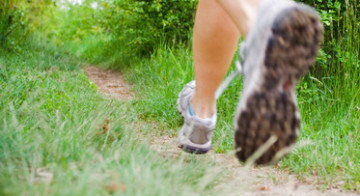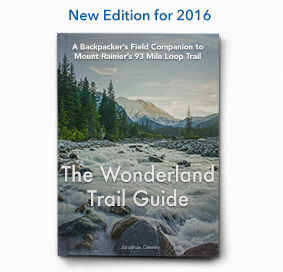For each of us, there is a weight limit where hiking turns from a pleasant walk to chore of hauling a backpack. For me, it’s around 10% of my body weight.
A study in miserable backpacking:
When I first started backpacking, I had a Gregory backpack that weighed over five pounds, an REI two-man tent that weighed another six, and a fifteen degree North Face sleeping bag that weighed another four pounds. Adding in a sleeping mat, dual layer Gore-Tex rain gear, fleece lining, a change of clothes, a stove, fuel, cookware, food, first aid kit, map, compass, novel, camera, and a few other sundries, and I would easily hit 35 pounds. I’d even drag along a full-sized tripod on top of this! I had some tough times, and thought that suffering was just a part of backpacking. I was terribly wrong.
Carrying too heavy of a backpack causes spinal compression and injuries.
Unless you’re what we’d call “a big old boy,” carrying a 25+ pound backpack is going to start taking a toll on you before long.
Carrying a large backpack causes compression of the spine, and you really don’t want to go there.
The only nice thing about a heavy backpack is when you take it off (and the accompanying feeling that you’ve just stepped into a low gravity environment).
When I started to pay attention to weight and dropped my pack to around 20 pounds, I couldn’t believe how much more I fell in love with backpacking.
Pack weight should and can frequently be kept under a limit such that you don’t notice your backpack most of the time. I wouldn’t have personally believed this was possible when I first started backpacking and forty pounds was my normal pack weight. One of my friends encouraged me to replace my “big three” items with lighter gear. This, along with dumping unnecessary items turned out to be enough to get my pack weight down into the twenty-pound range.
Cut your pack weight in half be replacing these three items:
Ultra-light backpackers talk of the “big three” items that make up the most weight and are the easiest to replace: the tent, sleeping bag, and backpack.
Usually replacing just these items is enough to get your load down to something quite comfortable.
Tent or Tarp? How about a tarptent?
Next, ask yourself if you really need a tent. Most long distance backpackers who hike the Pacific Crest Trail don’t think this is necessary. They carry ultra-light tarps and tarp tents constructed out of high-performance silicone-injected nylon (silnylon) which is waterproof and weighs less than 1.5 ounces per square yard. In my opinion, all backpacking tents should be made out of this material as it allows you to do away with a separate rain fly. The only reason ten manufacturers don’t use silnylon is because it costs over $10 a yard, much more than coated nylon. Increasingly silnylon is showing up in high-end tent models. You might also consider making your own. There are some very good plans on the internet. Henry Shires makes an outstanding line of silnylon tarp tents. These are hybrids between tents and tarps. Henry Shires even has free do-it-yourself plans for his original tarp tent (located here). The one-man version weighs 18 oz, and the two man weighs 24 oz. Henry Shires used this tarptent for a five month trip up the PCT. People modify these plans to include silnylon bathtub floors and fully-sealed mosquito netting. At this point they become full-fledged ultralight tents. All of the materials for these projects can be purchased for under $75.
I was planning to build one of these but my wife wanted something with a little more privacy since campgrounds are often crowded. After a great deal of research, we bought the LL Bean Microlight 2 person tent for $160. As of 2010, I’m convinced this is one of the best ultra-light tent deals on the market. It weighs 3 lbs, 12 oz and is basically a mesh bug shelter with a bathtub floor and a full-coverage silnylon fly. At less than two pounds per person, we couldn’t be happier. It is sturdily constructed, has enough room to sleep 2 comfortably, and enough head room to make changing one’s clothes a reasonable prospect. I suspect we will still be using this in ten years
Backpacks: Frames: external, internal, or how about no frame at all?
The second of the “big three” is the backpack. In the past, the biggest consideration was internal versus external frame. Frame packs are necessary if you’re hauling more than 15 or so pounds, but in the last few years frameless, ultralight packs have hit the store shelves and are hard to beat. You will not regret an ultralight backpack unless you’re carrying more than 15 pounds.
Buying an ultralight backpack is a good first-step toward going ultralight, as it can’t carry much weight and will force you to reconsider the necessity of everything you bring.
Sleeping bags
The last of the big three items is the sleeping bag. These can weigh a lot when made from synthetic materials. For three-season hiking in the mountains, a 15 degree bag is a is a good choice. If you’re only hiking in the summer though, a lighter bag (30 to 40 degree) will be more than enough and will shave off a few pounds.
Down is the best ultralight insulator, but it’s crucial that you keep it dry.
Down fill is the lightest insulator and this is what I prefer. Down is completely useless when it gets wet, however, so it is crucial that you keep it in a waterproof bag. I keep mine sealed in a durable plastic bag which is then stored inside of a water resistant stuff sack.
Make sure your down sleeping bag could be submerged in water and would still stay dry.
If you ever desperately need your sleeping bag, it’s probably going to be after falling into water or becoming soaked with rain. Pay careful attention to packing your down bag every morning – pretend it’s your skydiving parachute because your life could depend on whether or not it stays dry.
Synthetic insulation is safer than down.
Synthetic material is heavier than down, but can retain some of its loft when wet. If you’re concerned with your ability to stay dry, you might opt for synthetic rather than down.
DIY down quilts are not that difficult to sew, but beware that goose down can be difficult to work with and makes a huge mess.
A DIY down quilt is another project that will save you lots of weight and money. Carrying six feet of heavy-duty YKK zipper adds weight, and many ultra-light hikers have done away with the zipper altogether.
Some of the most popular home-brew designs for bags retain the shape of a rectangular sleeping bag, but are only sewn halfway up for easy entry. The top is made to be oversized so you can wrap up in it. This is especially nice for moderating your temperature on warmer nights. Some people employ Velcro patches to keep the bag sealed on colder nights.
You can purchase the highest-quality 800+ goose down in bulk and make your own ultra-light quilt for under $90. This may seem like a lot for a homemade bag, but you’re getting the Rolls Royce of materials and a similarly-built brand-name model would retail for at least three to four times as much.
Beyond the big three, cut every corner you can to shed weight without compromising safety, and you will be thrilled with how much more you enjoy backpacking.
Another good idea for lightening up is devising multiple uses for the same item. For example, why not use a tarp tent that employs a collapsible hiking pole rather than a tent pole? How about getting an ultralight backpack that uses a sleeping mat as its frame?
Sharing the Load
Water filters, stoves, cookware, tents, and first-aid kits can all be shared – and what a difference it makes to only carry half of this weight.
Stoves: do you really need a gas stove?
The next item to target is the stove. Once the hallmark of light weight, the Whisperlite is no longer considered the most economical option. For a fraction of the weight you can use a solid fuel stove. Esbit makes fuel tablets that retail for about $0.65 a piece and burn for about fifteen minutes – enough to bring about a pint of water to a rolling boil. I’ve used these on a few trips — they work great for boiling water, but aren’t the best option for cooking anything where temperature control would be helpful.
Cookware or ultralight beerware?
Cookware can be overpriced if you march down to your designer backpacking store and want brand-name titanium everything. One classy option is to cook and eat out of a 24 oz beer can with a titanium spork (usually under $10). Fosters cans work well for this, and you really cannot beat the weight. If you’re like me and aren’t keen on being seen in the backcountry with a jumbo beer can, a tin cup also does the trick.
Aluminum mugs that are large enough to eat a meal out of plus a solid-fuel stove are my go-to lightweight cooking kit.
Remember that simple options really will suffice most of the time. Give the cheap alternatives a try before you fall for the marketing and fork over your hard-earned cash.
Raingear: staying dry
The next necessity is raingear which can be both heavy and expensive.
Good Gore-Tex is a worthy investment that can last you for a decade — particularly if you’re a four-season outdoors person.
If most of your backpacking is done in the summer, however, you don’t need anything fancy. While you really can’t leave home without it, for many of us rain gear largely lives in our backpacks much of the time.
What’s important is that you have something — anything that can keep you dry.
The lightest option I could find is Dri Duck rain gear which sells for $30 for a complete set. The material is waterproof and breathable. After seam-sealing, it works surprisingly well for something so inexpensive. The weight of the entire rain suit is under a pound – lighter than just my Gore-Tex rain pants. My only complaints are that the seams will leak a little if not sealed and that the thin fabric could tear if it catches on a branch. I suspect with enough use, the backpack will also wear through the shoulders.
If you aren’t style-conscious, you might consider an oversized poncho that covers your backpack as well as you. This saves weight because you can ditch the backpack cover.
Ponchos offer the greatest ventilation, they are surprisingly nice to hike with during light rains. You can get a nice poncho for a song since they don’t need to be breathable. On the downside, ponchos probably aren’t the best bet on windy days. If you’re doing treed, forested hikes, a poncho is a good option, but if you’ll be exposed, it’s probably safest to stick with a rain suit.
If you’re doing much hiking at higher elevations or in exposed landscapes, you should invest in Gore-Tex rain gear.
Gore-Tex is wind-proof, the pants will last you for years if you only wear them when it rains, and you can use the jacket regularly around camp in the morning and evenings. Cabelas sells a set of ultralight Gore-Tex rain gear for about $200. They occasionally offer the pants for free with the full-price purchase of the jacket.

